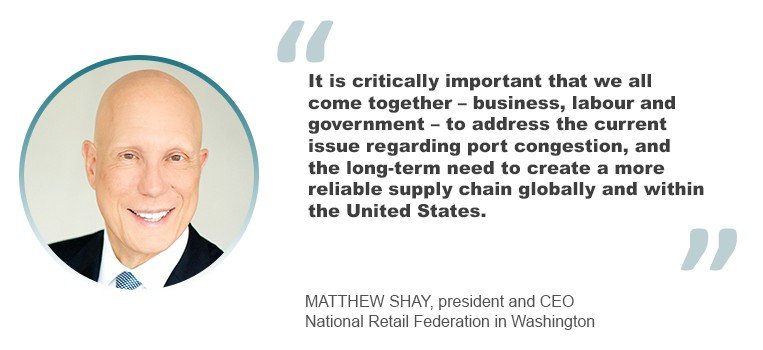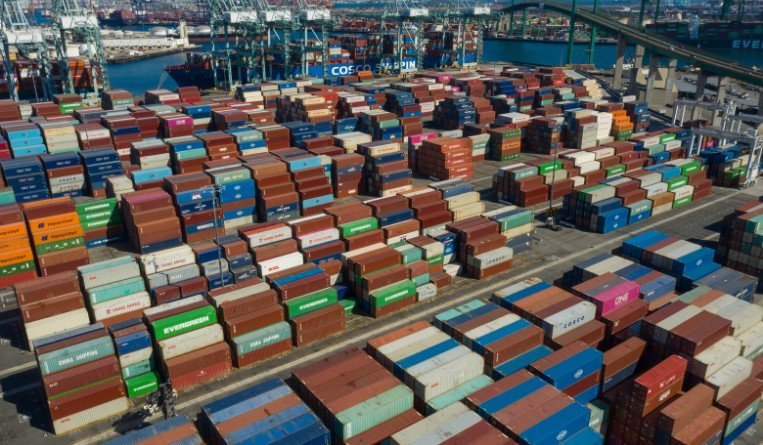California ports are looking to all levels of government for help in the struggle to stem the mounting congestion that is slowing the flow of goods through their facilities.
Danny Wan, executive director of the port of Oakland and president of the California Association of Port Authorities, wants help from the authorities. In early November, he called for more collaboration and support from the state government and other levels of the administration. These bodies should consider a broad array of measures, from land for container storage to a state-funded supply chain investment fund.
According to Wan, there is an 11:1 imbalance in federal spending on other U.S. port complexes and on California ports. The current congestion at ports in the state is a direct result of decades of lack of investment in ports and the supply chain, he argued.
Wan also called for a state freight policy that can authorize emergency action in times of supply chain congestion.
Calls for the California state government in Sacramento to step in have also come from the California Chamber of Commerce. In a letter to the governor, it asked for an easing of rules regarding container stacking and storage.
The federal government adopted a proactive stance early on, beginning with the executive order from President Joseph Biden for a strategic view of supply chains of critical sectors like semiconductors and healthcare. This led to the creation of a task force in June that is meant to coordinate policies on supply chain issues across agencies and work with ports and other links the supply chain.
Observers and government officials alike have stressed that Washington has limited room to intervene in a supply chain that is almost entirely in private hands. In the main, they see the government’s role as a broker to encourage collaboration among the various stakeholders.
The White House was actively involved in the shift of the ports of Los Angeles and Long Beach to round-the-clock operations, holding discussions with port authorities and labour unions, a role that won plaudits from the National Retail Federation (NRF) and other industry organizations.
Washington-based NRF president and CEO Matthew Shay thanked the White House and senior officials in a statement. “It is critically important that we all come together – business, labour and government – to address the current issue regarding port congestion, and the long-term need to create a more reliable supply chain globally and within the United States,” he said.

The White House has also leaned on large importers, such as Walmart, to make increased use of the extended port operating hours and pick up cargo during the night, and obtained pledges from several of them to do so.
The administration has stressed that warehouses, truckers and other parties also have to pull their weight and that it intends to take all necessary action to that end. “It’s not enough to move goods into the country – we also need to make sure that we get them on shelves,” the White House said in a statement. It is using data from various government sources to track progress along the supply chain and set up a dashboard on key performance indicators that is updated twice a month.
Biden has made it clear that the government’s intervention should not restrict itself to the immediate situation but also address long-term issues.
From the industry vantage point, this is viewed chiefly in terms of funding, such as a US$5 billion partnership between the Department of Transportation and California ports for expansion projects. Some ports have suggested that a program that allows the U.S. Maritime Administration to award grants in response to emergencies could be tapped for funds to support operations as well as incentives designed to alleviate congestion.
Other parties are looking for more government action on commercial issues. They have called for further investigations of demurrage and detention charges levied by ship lines, terminals and rail carriers, and of carriers’ pricing, alleging collusion to keep rates high.
Calls for moves against predatory pricing and excessive charges have also been made on the California state authorities. The Western States Trucking Association recently wrote to the governor to enforce legislation to prevent terminal operators and ocean carriers from levying excessive container and equipment fees even though drivers are unable to return empty containers and pick up loaded ones due to congestion.
Increasing signals that the congestion will prevent goods from reaching consumers in time for Christmas have intensified the desire for government intervention. One industry executive thinks that this could go a long way beyond discussions between the White House and stakeholders.
Ken Koenemann, vice president for technology and supply chain practices at lean manufacturing and supply chain consultancy TBM Consulting in Las Vegas, raised the possibility of the U.S. military stepping in with its logistics expertise and its soldiers and equipment to move cargo. The National Guard is deployed in the event of a natural disaster; it could also be used when the supply chain is in a critical state, he said.
Requests for governments to take an active role in combating the global supply chain situation have also emanated in other parts of the world. In early November, the International Road Transport Union, a global road transport association that claims to represent over 3 million logistics operators, issued an emergency call on governments around the globe to take decisive action. They want the authorities to accelerate the development and deployment of digital trade facilitation tools, to take measures to deal with driver shortages and to rein in galloping fuel prices by freezing or adjusting fuel taxes and charges.
Ian Putzger



